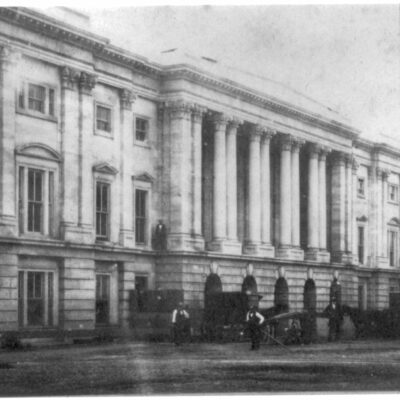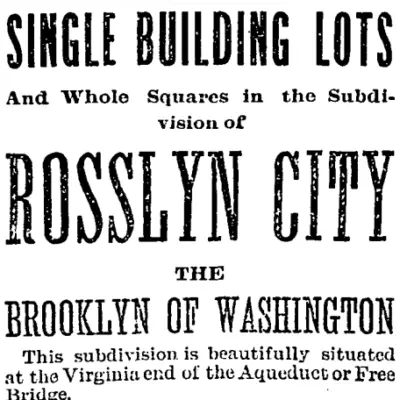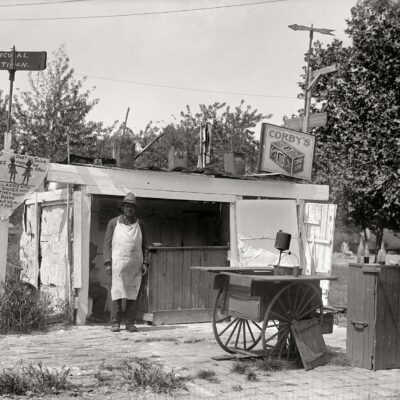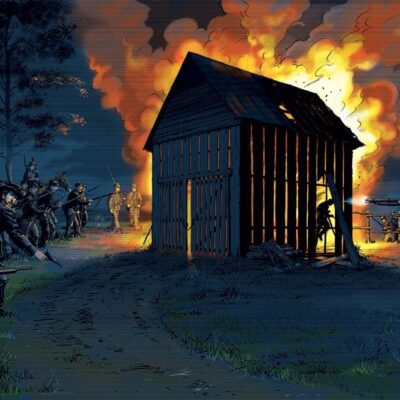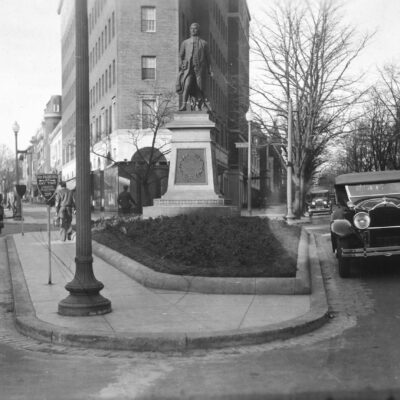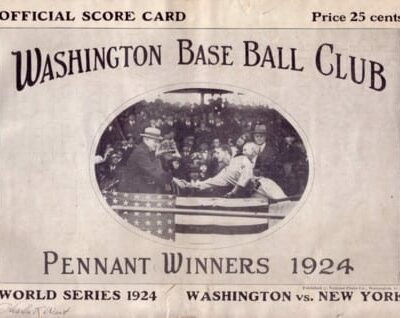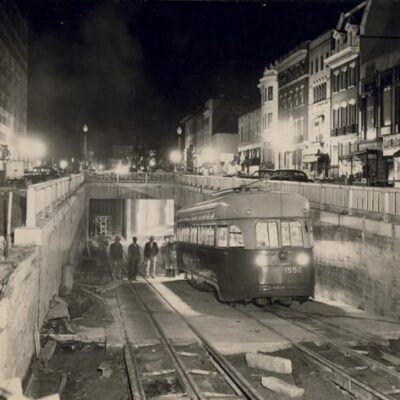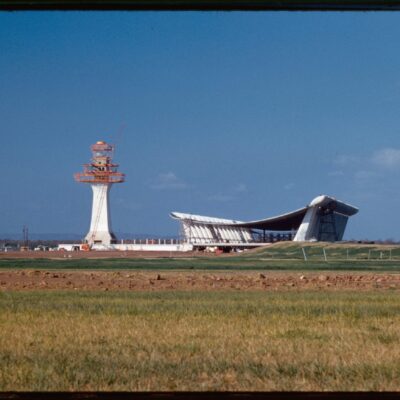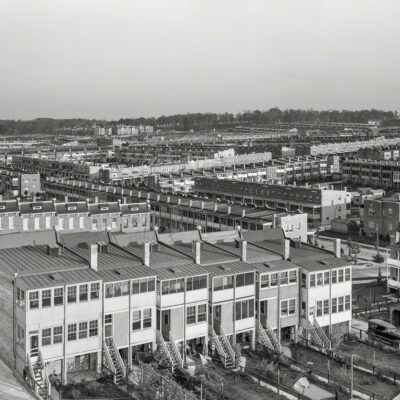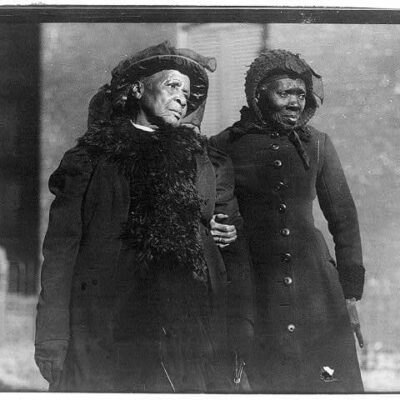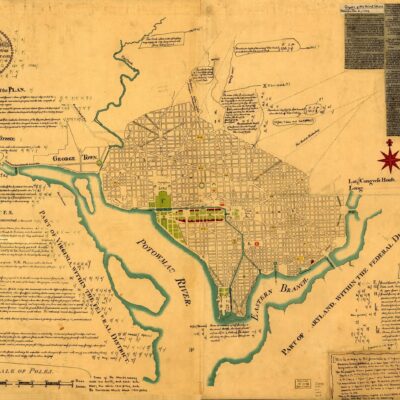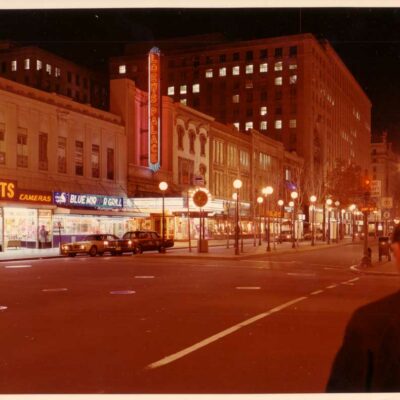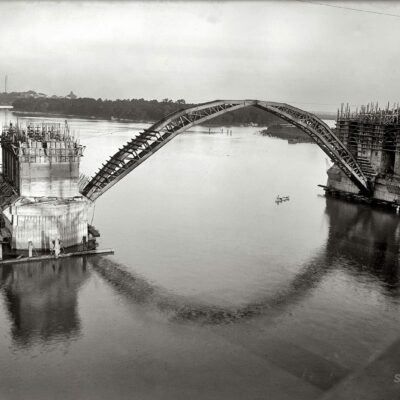The hundred square mile plot selected as the new seat of government was not unclaimed land. There were farms, estates and towns that were being swallowed up by United States government. But, I should add, that this wasn’t a case of eminent domain.
Nineteen original landowners were negotiated with, directly by George Washington himself at the end of March, 1791. He met with them during the day and in the evening, closed the deal with them at Suter’s Tavern in Georgetown.

By the way, Suter’s — formally known as the Fountain Inn — was the main gathering place in Georgetown at the time and is purported to have been at what is presently 31st and K St. NW.
After acquiring all the land for the new federal district, Washington wrote a letter to fellow Founding Father and Secretary of State, Thomas Jefferson.
The terms entered into by me on the part of the United States, with the landholders of Georgetown and Carrollsburg are, all land from Rock Creek along the river to the Eastern Branch, and so upwards to or above the Ferry, including a breadth of about one and one-half miles, the whole containing from three to five thousand acres, is ceded to the Public on condition, that, when the whole shall be surveyed and laid off as a city (which Major L’ Enfant is not directed to do), the present proprietors shall retain every other lot, and for such part of the land as may be taken for public use, for squares, walks, and so forth, they shall be allowed at the rate of twenty-five pounds per acre, the public having the right to reserve such parts of the wood on the land as may be thought necessary to be preserved for ornament, the landholders to have the use and profits of all the grounds until the city is laid off into lots and sale is made of those lots, which, by this agreement, becomes public property. Nothing is to be allowed for the ground which may be occupied as streets or alleys.
-ad 197-

Also of note is a record of September 8th, 1791 of the Commissioners meeting with Jefferson. This is important documentation of the streets naming convention in Washington.
…to name the streets of the Federal City alphabetically one way and numerically the other from the Capitol, and that the name of the City and Territory shall be the City of Washington and the Territory of Columbia.
The printers throughout the United States are requested to insert the above in their papers.
Well, unfortunately for President Washington and the Federal Government, the generous contractual clause granting the landowners continued use of the property created some serious problems. The farmers continued to raise their crops on land now owned by the government, preventing the proper laying of planned streets and roads.
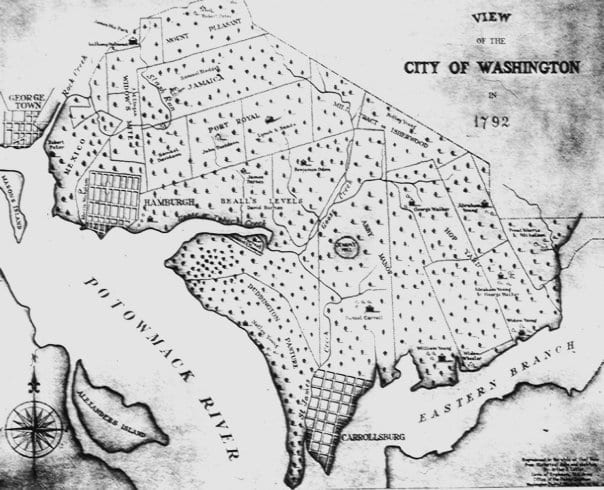
One of these farmers was particularly troublesome and labeled obstinate by President Washington. David Burnes had approximately 700 acres coveted by the government, including the land on which the White House currently sits. Burnes was the recipient of numerous letters from the Commissioners, imploring him to cease growing his crops on land that was laid out to become Pennsylvania Avenue.

UPDATE: Per the comment I received, I should probably clarify that this refers to the city of Washington, not the entirety of the District. Today they are one and the same, but they were very much distinct back then.
